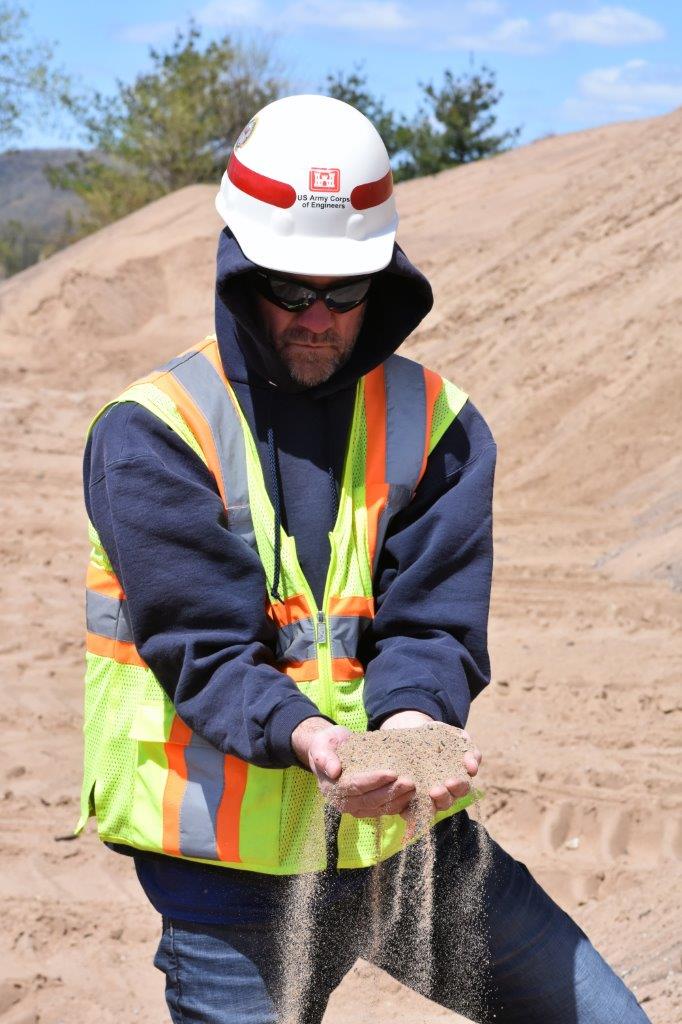
The following requirements and limitations govern removal and beneficial use of dredged material from beneficial use sites managed by the Corps of Engineers. The Corps of Engineers is making these sites (and the material at them) available on an as-is basis and makes no warranty, representation, or promise of any sort that there is beneficial use material currently at a given site, that the material that is present is suitable for use for any particular purpose, or that any given site is supervised or maintained in a particular condition. Access to the sites and the material there, if any, is generally on a first-come, first-served basis. The term "user" refers generically to anyone who: accesses the site, removes or attempts to remove dredged material, transports dredged material within or from the site, or puts that material to use for any purpose.
1. The user is responsible for all costs associated with the loading, handling and transport of material from the site.
2. The Government accepts no responsibility for the condition of the stockpile on the site. Users enter the site and remove material at their own risk. Users are responsible for inspecting the site to identify any possible dangerous conditions before entering the site or undertaking work to remove material. The Government accepts no liability for a user's actions, damage to equipment or personal injury as a result of the user's activities on the site.
3. The user is responsible for ensuring all work associated with the removal of material from the site and the ultimate disposition of the material is in accordance with all applicable local, state, and federal laws and regulations and any other applicable requirements.
4. If access to a stockpile site involves crossing property not controlled by the Corps of Engineers, it is the user's responsibility to obtain the necessary permissions.
6. No user has the right to exclusive use of the site or any material at the site.
7. Users are expected to conduct their operations in a courteous manner with full consideration of the rights of other users and any adjacent landowners. Simultaneous removal by two or more different users must be well coordinated between the parties involved and accomplished without interfering with the rights of others to access the material at the site; the Corps of Engineers may be engaged if determined helpful or necessary by the user(s). Sharing of equipment in limited space work areas may be beneficial when multiple users are present. Users must make their own arrangements with each other if they propose to undertake joint operations.
8. In general, Corps of Engineers policy is to allow public entities first opportunity to obtain material for public projects.
9. Users shall abide by any Corps of Engineers signs or other direction identifying where material may be removed or any other limitations regarding the use of the site or instructions relating to removal of material.
10. Removal is permitted year round, Monday through Friday between the hours of 7 a.m. and 5 p.m. local time. If removal is required outside of regular hours, coordination with the Corps of Engineers and potentially the local municipality is required.
11. Users are responsible for any damages or injuries that result from their use of the sites. Users are responsible for conducting their operations in a manner that is safe to themselves and to others who are or may be using the site. Users are required to conduct their activities in a way that does not create hazardous conditions for other users. By way of example, steep vertical or near vertical faces on excavated piles present a safety hazard. Users are responsible for making sure that all excavations and removals, whether attended or otherwise, have safe and stable slopes. Note to users: gradual slopes will also deter swallow nesting, which could restrict or eliminate beneficial use operations through the nesting period.
12. Access to these sites and the material at them is a privilege, not a right. The Government reserves the right to deny site access to any user or all users if this privilege is abused. Also, please note that the Corps of Engineers intends that use of these sites be maximized and that users work on the honor system. Users are reminded that improper use of the site by a single user may result in more stringent restrictions in the future that affect all users.